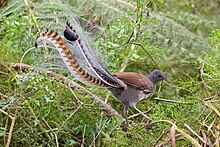| This article needs additional citations for verification. Please help improve this article by adding citations to reliable sources. Unsourced material may be challenged and removed. Find sources: "Budawang National Park" – news · newspapers · books · scholar · JSTOR (March 2009) (Learn how and when to remove this message) |
| Budawang National Park New South Wales | |
|---|---|
| IUCN category Ib (wilderness area) | |
 | |
| Nearest town or city | Braidwood |
| Coordinates | 35°25′12″S 150°02′41″E / 35.42000°S 150.04472°E / -35.42000; 150.04472 |
| Population | 29 (SAL 2021) |
| Established | 23 September 1977 |
| Area | 237 km (91.5 sq mi) |
| Managing authorities | New South Wales National Parks and Wildlife Service |
| Website | Budawang National Park |
| See also | Protected areas of New South Wales |
Budawang National Park is a national park in New South Wales, Australia, located approximately 200 kilometres (120 mi) southwest of Sydney and 25 kilometres (16 mi) north of Batemans Bay. It contains part of the Budawang Mountain Range.
Budawang National Park is named after Mount Budawang. The mountain itself derives from the Aboriginal word 'Buddawong'. The vantage point afforded by the mountain was originally used to make signal fires.
The Budawang National Park is largely isolated. Its terrain is steep and rugged. The park comprises high-elevation moist forests.
Landscape
Most of the Budawang National Park lies within the southern Budawang Range. This range is characterized by rugged terrain, steep slopes and deeply incised valleys.
Wildlife
Budawang National Park's diverse landscape has created pockets of unique habitats where several plant and animal species survive.
Plants
The middle and high slopes of the hills in the park are covered in cool temperate rainforest. In the lower elevations, which are drained by small rivers and streams, the dominant vegetation is dry rainforest trees and ironwood.
Animals
The park supports good populations of swamp wallabies, greater gliders, and potoroos. Eastern grey kangaroos, common wombats, honeyeaters and white-throated tree creepers inhabit the open forest and woodland. Other notable bird species include green catbirds and lyrebirds.


Gallery
-
 Papillaria Cloudforest.
Papillaria Cloudforest.
-
The view from Mount Budawang.
-
 On the summit of Dithol or Pigeon House Mountain in nearby Morton National Park.
On the summit of Dithol or Pigeon House Mountain in nearby Morton National Park.
See also
References
- Australian Bureau of Statistics (28 June 2022). "Budawang (suburb and locality)". Australian Census 2021 QuickStats. Retrieved 28 June 2022.

- ^ "Budawang National Park". NSW National Park and Wildlife Service. Retrieved 30 September 2013.
| Southern Tablelands, New South Wales, Australia | |
|---|---|
| Local government areas | |
| Cities | |
| Main towns | |
| Villages and small towns |
|
| Rivers and other waterbodies | |
| Mountains and ranges | |
| National parks | |
This New South Wales protected areas related article is a stub. You can help Misplaced Pages by expanding it. |